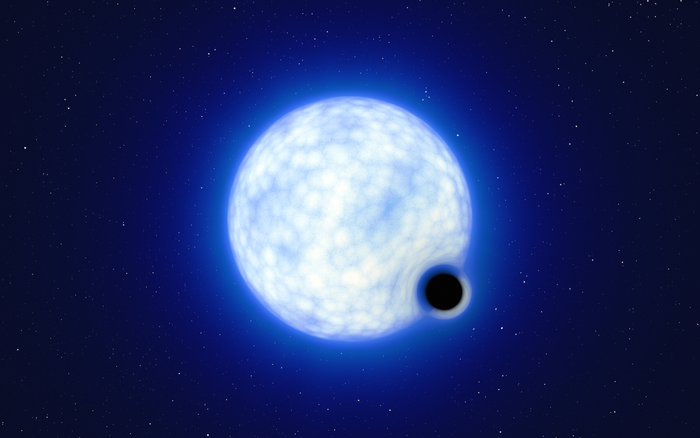Scientists find black hole unlike any other discovered before

Your support helps us to tell the story
From reproductive rights to climate change to Big Tech, The Independent is on the ground when the story is developing. Whether it's investigating the financials of Elon Musk's pro-Trump PAC or producing our latest documentary, 'The A Word', which shines a light on the American women fighting for reproductive rights, we know how important it is to parse out the facts from the messaging.
At such a critical moment in US history, we need reporters on the ground. Your donation allows us to keep sending journalists to speak to both sides of the story.
The Independent is trusted by Americans across the entire political spectrum. And unlike many other quality news outlets, we choose not to lock Americans out of our reporting and analysis with paywalls. We believe quality journalism should be available to everyone, paid for by those who can afford it.
Your support makes all the difference.Scientists have found a dormant black hole that is unlike any found before.
Researchers say there is no other explanation for the unexpected data, which shows there is a stellar-mass black hole in the Large Magellanic Cloud, the neighbouring galaxy of our own Milky Way.
The star that brought about the black hole appears to have vanished without a powerful explosion, the researchers say.
Other black holes like this have been found before. But the researchers say this is the unambiguously detected object of its kind – a dormant, stellar-mass black hole.
The discovery is remarkable in part because the team behind it have been nicknamed the “black hole police” or “black hole destroyers” – as a result of their previous work in showing that other black hole discoveries were actually mistaken.
“For the first time, our team got together to report on a black hole discovery, instead of rejecting one,” said study lead Tomer Shenar, from Amsterdam University, in a statement.
Researchers described the black hole as a “needle in a haystack”. Astronomers believe that dormant black holes are relatively common throughout the universe, but we know very little of them, and confirmed examples are rare.
They are difficult to spot in part because being dormant means they do not interact a lot with their surroundings. Researchers have spent years looking for them, but struggling as a result.
There are also a whole host of explanations for many of the phenomena that indicate such black holes, meaning that confirming them can be difficult.
To find the new example, researchers looked at almost 1,000 massive stars in the Turantula Nebula, part of the Large Magellanic Cloud. They looked for examples that might have black holes accompanying them.
Eventually, they discovered VFTS 243. Researchers checked that it really was such a black hole, given the scepticism that can greet such findings, and say they are confident of what they are found – but encourage further research.
“Of course I expect others in the field to pore over our analysis carefully, and to try to cook up alternative models,” said Kareem El-Badry, a co-author on the paper who has been given the nickname ‘black hole destroyer’.
A paper describing the findings, ‘An X-ray quiet black hole born with a negligible kick in a massive binary within the LMC’, is published today in Nature Astronomy.
Join our commenting forum
Join thought-provoking conversations, follow other Independent readers and see their replies
Comments